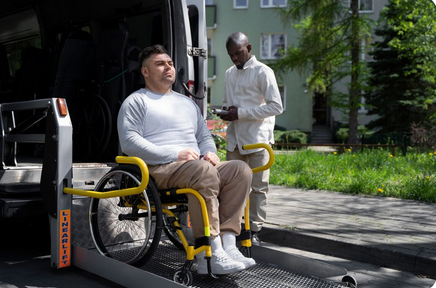Maintaining independence and mobility is crucial for elderly and disabled patients, yet navigating crowded streets or long distances can often be challenging. Modern solutions are transforming how people move, offering both safety and convenience in daily life. Among these innovations, the advantages of enclosed mobility scooters stand out, providing protection from the elements, enhanced stability, and greater comfort for users. Beyond simple transportation, these scooters empower individuals to engage more actively in their communities and maintain a sense of freedom. Understanding these benefits can help families and caregivers make informed choices, ensuring that mobility solutions genuinely improve quality of life for those who need them most.
Enhanced Safety and Stability
Enclosed mobility devices offer superior safety compared to conventional wheelchairs or scooters. The protective structure shields users from environmental hazards like rain, wind, and uneven surfaces, minimizing the risk of slips, falls, or injury. Many enclosed devices come with seat belts, anti-tip mechanisms, and smooth suspension, which provide additional stability and peace of mind for both patients and caregivers. These features allow users to navigate urban areas, parks, or crowded spaces more confidently. By reducing exposure to potential hazards, enclosed mobility enhances independence while ensuring safety, making it easier for patients to move around without fear or constant supervision.
Comfort and Weather Protection
One of the most noticeable benefits of enclosed mobility is the comfort it provides. Elderly and disabled patients are often sensitive to extreme temperatures, rain, or strong winds, which can limit outdoor activities. Enclosed devices create a protective environment that shields users from these elements, allowing them to enjoy outings year-round. Many models also feature adjustable seating, cushioning, and ventilation to further enhance comfort during travel. Being able to move outdoors comfortably encourages regular activity, supports mental well-being, and reduces the physical strain often associated with long distances, proving that comfort is as important as mobility for maintaining independence.
Increased Independence and Freedom

Enclosed mobility empowers users to maintain a level of independence that might be difficult with traditional mobility aids. Patients can travel longer distances, run errands, or participate in social events without relying heavily on caregivers. The protective enclosure reduces physical exertion, allowing users to navigate daily routines more easily and confidently. This independence often translates to a higher quality of life, as patients feel more in control of their schedules and activities. Enclosed mobility bridges the gap between safety and freedom, giving users the ability to engage more fully in community life and outdoor experiences without compromising their well-being.
Reduced Fatigue and Physical Strain
Physical strain is a common challenge for elderly and disabled patients, especially during long walks or extended periods outdoors. Enclosed mobility devices are designed to reduce this fatigue by providing motorized assistance, ergonomic seating, and smooth maneuverability. Users can travel farther distances with less effort, conserving energy for other daily activities or leisure pursuits. This reduction in physical stress also benefits caregivers, as they are less burdened with pushing or assisting, creating a more balanced and sustainable routine. In essence, enclosed mobility transforms mobility from a tiring task into a comfortable, efficient, and stress-free experience.
Enclosed mobility offers a range of advantages for elderly and disabled patients, including improved safety, enhanced comfort, greater independence, and reduced physical strain. By protecting from the elements, providing stable support, and ergonomic design, these devices make outdoor travel and daily activities more accessible and enjoyable. For patients and caregivers alike, enclosed mobility represents a practical solution that promotes active lifestyles, confidence, and self-reliance. Investing in such mobility solutions can profoundly impact quality of life, allowing elderly and disabled individuals to remain engaged, active, and independent while reducing stress and effort for everyone involved.


